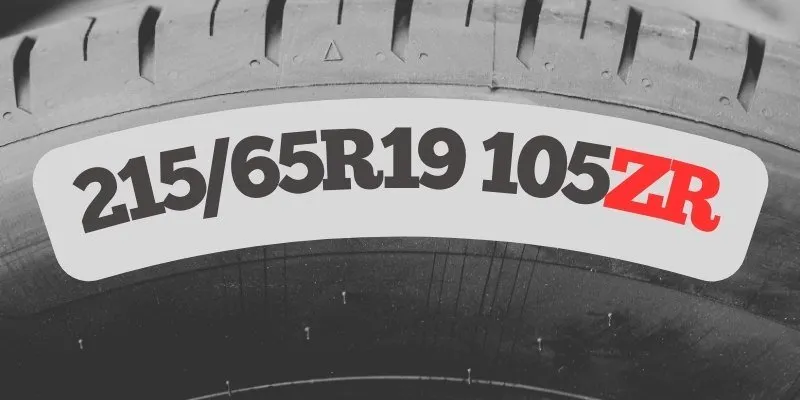What Does zr in Tire Size Mean?

ZR in a tire size refers to the speed rating of the tire, specifically indicating that it’s rated for speeds over 149 mph (240 km/h).
The “Z” represents the highest speed rating category, while the “R” stands for “Radial,” which describes the tire’s construction type. ZR tires are designed for high-performance vehicles and offer enhanced stability and handling at very high speeds.
Breaking Down the Tire Code
Imagine you’re decoding a secret message on the side of your car. That’s essentially what you’re doing when you read a tire size! Let’s break it down using a common example: 225/45ZR17.
- 225: This is the width of the tire in millimeters. Think of it as how thick your tire is from side to side.
- 45: This represents the aspect ratio. It’s like the tire’s profile – how tall the sidewall is compared to its width. In this case, the sidewall height is 45% of the tire’s width.
- ZR: Here’s our star of the show! We’ll dive deeper into this in a moment.
- 17: This is the diameter of the wheel rim in inches. It’s like measuring across the face of a clock.
The “Z” Factor
Now, let’s zoom in on that “Z”. In the world of tire speed ratings, “Z” is like the Olympic gold medalist of speed. It means the tire is designed to handle speeds over 149 mph (240 km/h).
To put this in perspective, imagine you’re on a highway where the speed limit is 70 mph. A tire with a “Z” rating could theoretically go more than twice that speed safely! Of course, we’re not advocating speeding here – this is just to illustrate how high-performance these tires are.
The “R” Revolution
The “R” in ZR stands for “Radial.” This might sound technical, but it’s actually a game-changer in tire design that’s been around since the 1940s.
Think of radial tires like a sandwich. The “bread” is the outer rubber that touches the road, and the “filling” is made up of cords that run perpendicular to the direction of travel – like spokes on a bicycle wheel.
This design allows the sidewall and tread to function independently, providing better grip, longer wear, and improved fuel efficiency.
Before radial tires, we had bias-ply tires. Imagine these like a woven basket – not as flexible or efficient. The shift to radial tires was like going from a horse-drawn carriage to a modern car in terms of performance improvement.
Why ZR Matters
So, why should you care about ZR tires? It’s all about matching the right shoes to the right dance. If you have a high-performance car capable of reaching extreme speeds, you need tires that can keep up.
ZR tires are engineered with special compounds and construction techniques to handle the extreme heat and stress of high-speed driving. They’re like the heat-resistant mittens you use to handle a hot dish from the oven – designed to perform under pressure.
However, it’s important to note that just because a tire can handle high speeds doesn’t mean it’s always the best choice. For everyday driving, factors like comfort, noise level, and fuel efficiency might be more important than top speed capability.
Beyond Z
While “Z” is at the top of the speed rating chart, tire technology hasn’t stood still. Some manufacturers now use “W” (up to 168 mph) and “Y” (up to 186 mph) ratings for even higher speeds.
These are often written as ZR(W) or ZR(Y) to maintain the “Z” legacy while providing more specific information.
Decoding for Better Driving
Understanding what ZR means in your tire size is more than just trivia – it’s about knowing your vehicle’s capabilities and limitations. ZR tires represent the pinnacle of speed ratings, designed for high-performance vehicles and extreme speeds.
The “Z” tells you about the speed capability, while the “R” indicates the radial construction that’s now standard in most modern tires.
Remember, while it’s exciting to know your tires can handle racetrack speeds, the most important thing is to drive safely and within legal limits on public roads.
Choosing the right tire isn’t just about speed – it’s about finding the perfect balance of performance, safety, and comfort for your specific driving needs.

Meet Caitlin McCormack, a Tire Size Expert and Blogger Passionate About Everything Related to Tires. With Years of Experience in the Tire Industry, Caitlin Has Become an Expert in Tire Sizes and Their Impact on Vehicle Performance.
